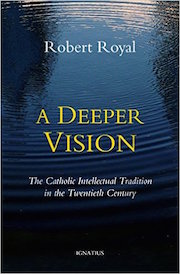In a side chapel in Rome’s Saint Mary Major Basilica, the mortal remains of Cardinal Federico Cesi (1500-1565) rest beneath a fabulous funerary monument. Cesi had a storied career in the Church: he served as bishop of multiple dioceses, held high-ranking offices within the College of Cardinals, participated in three papal conclaves, was friends with the future saints Philip Neri, Charles Borromeo, and Ignatius Loyola. He commissioned the creation of the side chapel, now named for him, where his bones rest, opposite his brother, who was also a cardinal.
Countless other cardinals, the most illustrious leaders of the Catholic Church, line the walls of other churches throughout Rome with similar monuments. Some cardinals commissioned their monuments themselves while they were still alive. Others, such as Federico Cesi, were given monuments after their deaths by friends and family. In either case, these monuments were sculpted to communicate the grandeur of a past life to posterity. In the sculpture, it is hoped, the deceased will find some form of immortality.
Yet, with the passage of time, these once renowned cardinals have been forgotten, and their monuments catch only fleeting glances as visitors peruse other, more interesting adornments in the churches where they rest.
The cardinals’ vain attempts at achieving lasting fame here on earth warn us that only God will remember our lives. And that should be all the motivation we need for our actions.
Funerary monuments are the grandest examples of the complex interplay between our innate desire for earthly immortality and the supernatural promise of eternal life. Though we believe in faith that the latter is the only goal that matters, too often we operate, to our own diminishment, as if eternal life on earth is our true end.
The desire to live on after death follows from our instinct for self-preservation. We shudder at death and the seeming oblivion it brings. So, we constantly seek ways to prolong life and to secure a place in this world after death. The latter, notes Joseph Ratzinger in Introduction to Christianity, we pursue chiefly through having children and through fame.
The desire to reproduce is natural; the stain of Original Sin generates the drive for fame, which can fast become a rabidly self-consuming exercise. In longing to be known, to be remembered, to be honored, we turn inward into ourselves – and away from God. Hence working for fame brings not eternal life, but a form of eternal punishment. “Self-made immortality,” Ratzinger writes, “is really only a Hades, a sheol: more nonbeing than being.”

Catholic piety, following the commandments of our Lord to “go and sit in the lowest place” and to “not lay up for yourselves treasures on earth,” offers a remedy to overcome the errant desire for fame: the Litany of Humility, whose every petition lands like a punch in the gut:
From the desire of being honored, deliver me, O Jesus.
From the desire of being praised, deliver me, O Jesus.
From the fear of being forgotten, deliver me, O Jesus.
That others may be praised, and I go unnoticed, Jesus, grant me the grace to desire it.
Prayers do not work like weedkiller, however. These abhorred desires never disappear, and we can add to the complexity we feel in combatting them: certain pursuits of fame and of lasting immortality – donating items in a church or school that bear our names, erecting or extending buildings, endowing institutions, writing books, creating art, establishing programs – can bestow charity and opportunity for posterity that would not have existed otherwise.
Ironically, while backing ourselves into a self-created Hell in pursuit of what cannot be satisfactorily obtained, we can somehow give others a touch of Heaven.
Such charitable works also provide posterity with culture, with history, with an awareness of place among the great cloud of witnesses. If every lasting human achievement were composed anonymously, each succeeding age would be more impoverished and their links with those in the Body of Christ who have gone before would grow more tenuous.
But for the benefactors themselves, the earthly returns dry out quickly. For, as Ratzinger puts it, “what remains [in time after death] is not the self but only its echo, a mere shadow.”
Christians must redirect, deliberately and repeatedly, their innate desire for immortality away from this world, with its empty promises, to God, who, in Ratzinger’s words, “does not hold just the shadow and echo of my being. . . .I myself am his thought, which establishes me more securely, so to speak, than I am in myself.” In God “I can stand as more than a shadow; in Him I am truly closer to myself than I should be if I just tried to stay by myself.”
In seeking earthly immortality, the cardinals on the walls have unwittingly taught us – by their failure to achieve it. The monument more lasting than bronze is rest in the eternal memory of God. He alone never forgets. If we recall daily that only His esteem matters, we can avoid imprisoning ourselves in the sheol of our own misplaced expectations.














